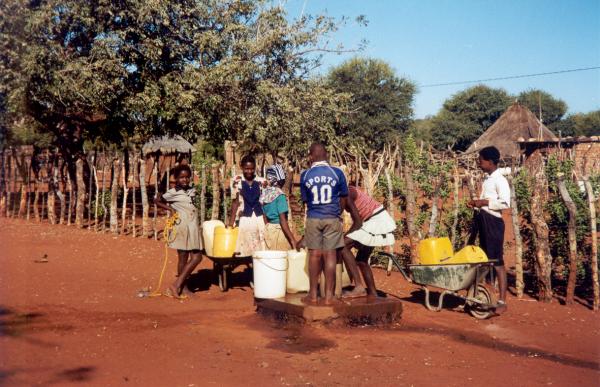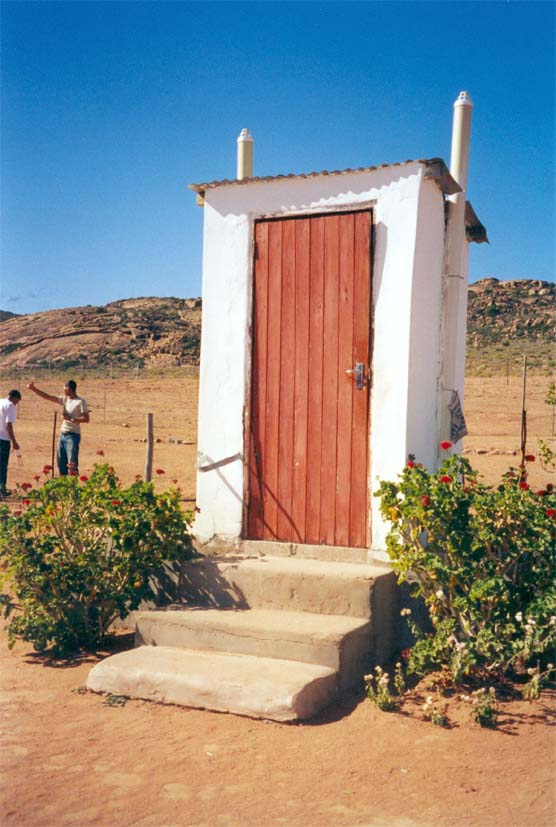The Guardian the other day posted an article which claimed that water and sanitation projects are not sexy enough and that donors therefore are not willing to invest in them. According to various interviewees in the article, donors prefer to invest in schools or clinics, rather than in "unsexy" water projects. The interviewees call for an increase in donor funding for water and sanitation. Rather than sexying up the sector, I think the water sector should be a bit careful in what it is asking for, as more money is not necessarily the solution to the problem, and may even reinforce the donor dependency in the sector.
Published on: 11/07/2011
The article mentions that donor aid to water and sanitation has gone down in relative terms compared to the percentage of aid dedicated to the health and education sectors. In 1995, 7% of all aid budgets went to water and sanitation; in 2004, it was 4%. In the same period the percentage of aid for education went up from 5 to 6.5% and health really had a boom growing from 7 to 11%. However, and this is the BIG however, in absolute terms aid to water and sanitation has nearly doubled from 3.7 billion US$ in 1998 year to 7.4 billon US$ in 2008. The water and sanitation sector benefitted from the overall growth in aid; it is just that the health and education sectors benefited even more. My question is whether the interviewees in the Guardian article would also like to have seen the percentage of aid going up in relative terms? In my view there is no justification for or against that. Nobody will deny that investments in health are just as much needed in as investments in water and sanitation, or roads or any other development sector. The question is how much should go to each sector. Should 7% of all global aid be spent on water and sanitation and only 5% on education? Or should it be the other way around? I don’t think that anyone has the correct answer to this, and we should therefore stop making these kinds of comparisons with other sectors.
More importantly, little analysis is provided why aid to water and sanitation has gone down.
Is it indeed, as the article claims, that water and sanitation is less sexy than schools? Ok I am biased, but surely the idea of providing people with a borehole or a tap is something that would appeal to tax payers in developed countries and officers at development agencies. You put some money on the table, get some contractors to drill a borehole, put a pump on top, and you will soon have a photograph of happy children getting fresh water.

Shouldn’t that be at least as appealing as putting some money on the table, get some contractors to build a school, put some tables and chairs in and take a photograph of happy children learning the alphabet? I cannot imagine that the sexiness argument is real (apart from sanitation, because who likes to see pictures of toilets on posters of a charity at the railway station, even if they are nicely built ones?).

If it is not the sexiness argument, is it then maybe something else?
Maybe recipient countries, utilities and user themselves have increased their spending on water and sanitation, reducing the need for donor contributions? The answer to this cannot be given, as, unlike donor money, these other sources of funding are very hard to track at a global level. The GLAAS report with the figures on donor financing, has little data on how much governments themselves are investing and no data on how much is invested by other parties. Last year’s study on infrastructure investments in Africa by the World Bank showed that aid is still a smaller source of financing of water and sanitation infrastructure than household’s own investments, and is more or less of the same order of magnitude as government contributions. However, there is very little data on trends in these investments. So, we cannot say whether other sources of finance are taking up the place of aid in the water and sanitation sector.
Maybe the trends in what donors finance are quite random anyway, so we shouldn’t attach too much value to the percentages from one year to another? That could very well be the case. There is an unmistakable upward trend in aid for water and sanitation in absolute terms and a downward trend for the relative share, but the graphs plotting there trends have their peaks and valleys (just as the graphs for the education and health sectors by the way).
Or, could it be that the water sector is not very good of making effective use of the funds that are available? Probably this is part of the issue as well. In the Triple-S study we did we found shocking figures of the percentages of budgets for water and sanitation actually being used in a financial year, in some countries as low as 45%. Absorption capacity is a big bottleneck in aid in general, and the water sector is not an exception. Whether it is better or worse in the water sector than in health or education, I don’t know (would be interesting if someone has the figures). But it is clear that in a number of countries, there is little use in putting more money into the sector, until the absorption capacity goes up.
For these, and probably many other, reasons, I think the water sector should be a bit careful in asking for more money. As water sector professionals, we first have a responsibility to make sure that existing funds are used effectively. In addition, care should be taken not to ask this money, once again, from donors. We all know how donor dependent the water sector is in many of the countries. As one of my colleagues from Zimbabwe often repeats “the government here thinks that WASH is for donors”. The water sector, maybe unintentionally helps in maintaining that image. The GLAAS report, from which many of the figures above are taken, telling first presents the data of aid spending on water and sanitation, and then the data of government spending. The former are also analysed in much more detail in terms of how that money is used, for what purpose etc. As donors are becoming more and more serious about the aid effectiveness agenda, and particularly government leadership in that, we should also expect more clarity on what governments could and should do themselves. Calls for more investment in the water and sanitation sector should therefore as much be made towards governments as to donors. And as a minimum, a call should be made for making it clearer who is investing how much in water and sanitation, and how that compares to the needs. We first need to get a clear picture of all the parts of the puzzle, before we can ask for more. That may not be a very sexy message to put forward in newspaper articles or advocacy events. Yet, I believe that a dull, but well-organised water sector which has its house in order, will be sexy enough to attract financing.
At IRC we have strong opinions and we value honest and frank discussion, so you won't be surprised to hear that not all the opinions on this site represent our official policy.